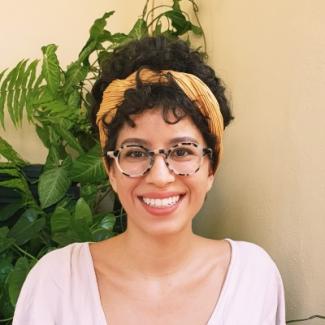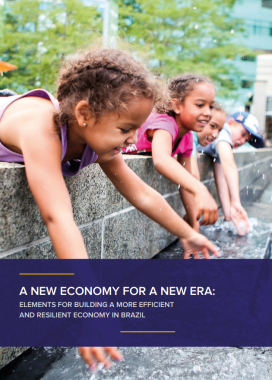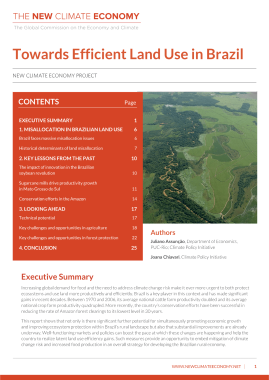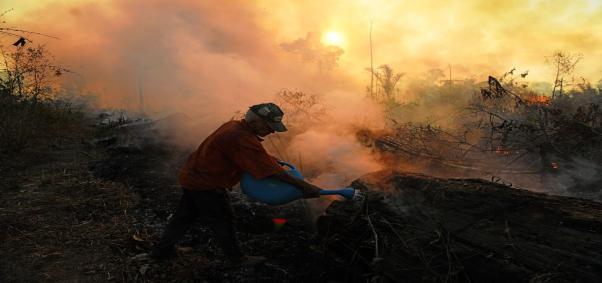The goal of the New Economy for Brazil project is to deliver analysis which identifies the economic and social benefits of a more rapid transition to a low-carbon economy, and which can be used to engage key audiences and mobilize action at the private, financial, and subnational levels.
In 2020, the publication of the first report, A New Economy for a New Era: How to Build a More Efficient and Resilient Economy for Brazil, highlighted how Brazil can become more innovative, productive and competitive by opting for a low-carbon, sustainable growth path.
In 2021, the NCE team elaborated on this further in a technical note exploring policy options and socio-economic analysis to identify inclusive green recovery and transition opportunities in specific geographies or sectors, currently in our review process. This technical note updated the Green Economy modelling developed under the New Economy for Brazil project, capturing the impacts of the COVID-19 pandemic and the benefits of a climate-smart recovery. The Brazilian federal government adopted the New Economy for Brazil modelling work as the baseline for the implementation of Action 6 of EuroClima+, focused on A Green New Deal for Brazil and implemented in partnership with GIZ. NCE and WRI Brasil continued working with leading universities in-country to design ‘transition scenarios’ to a low carbon economy for the Brazilian Amazon where biodiversity protection and social inclusion are key goals. This includes mapping the current economy of the region and assessing future economic opportunities.
Since 2022, the New Economy for Brazil project (phase II) is focusing on how two industrial sectors — cement and steel — could support the Brazilian economic recovery while reducing GHG emissions and creating jobs. It is also exploring how the forest sector can support and benefit from such transition by enabling new sources of energy and building materials.
In 2023, the team launched the New Economy for the Brazilian Amazon report, which included a unique concept of bioeconomy for the Amazon, financial and funding pathways for sustainable and green economic growth while keeping the forests standing, and economic modelling and mapping to identify the best pathways for sustainable development. The next phase focuses on implementing the study recommendations, and cooperating with other experts on a Pan-Amazon Network, to apply the concepts of bioeconomy to other countries with Amazon rainforest and support a similar study in Colombia.





